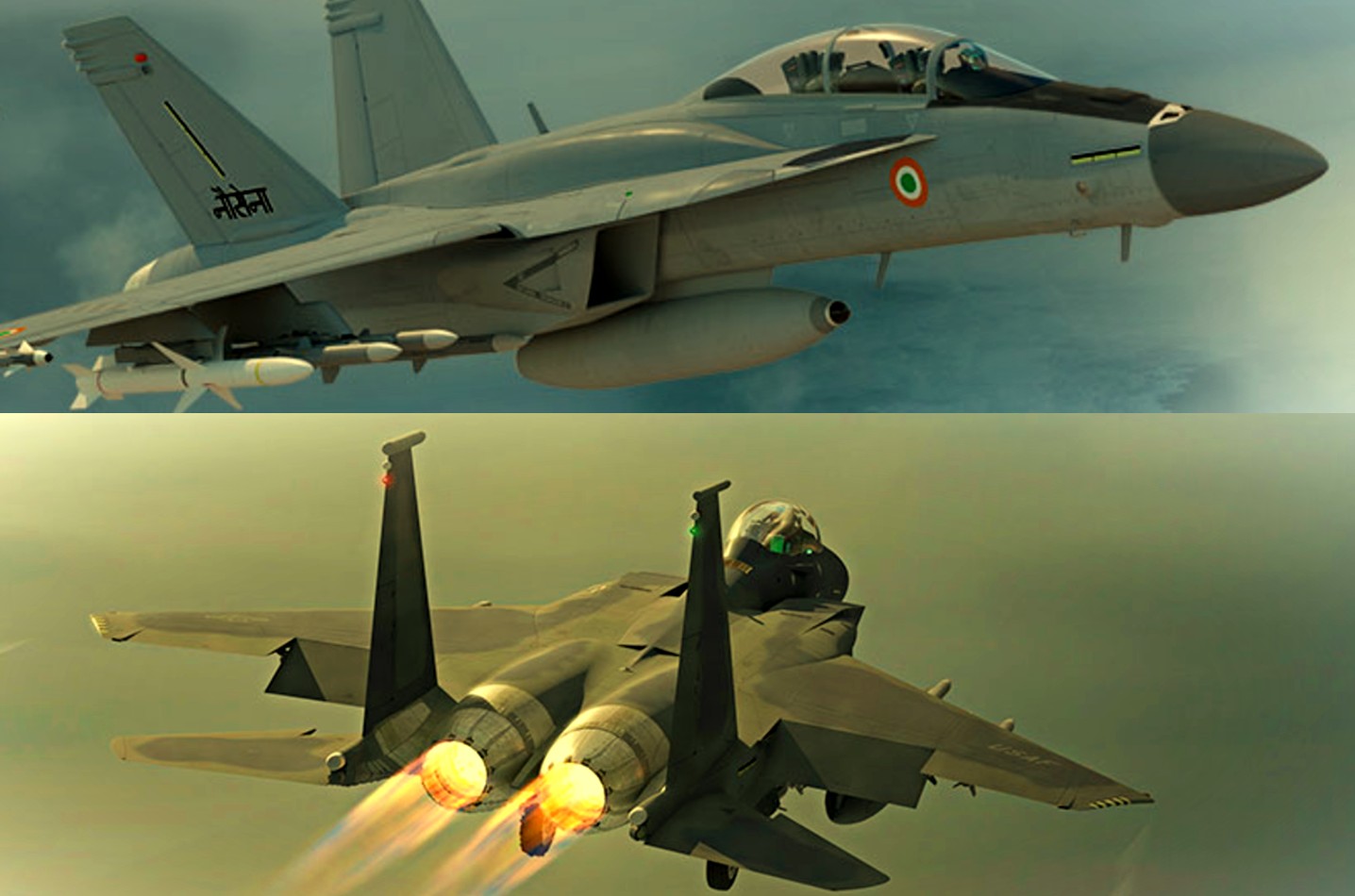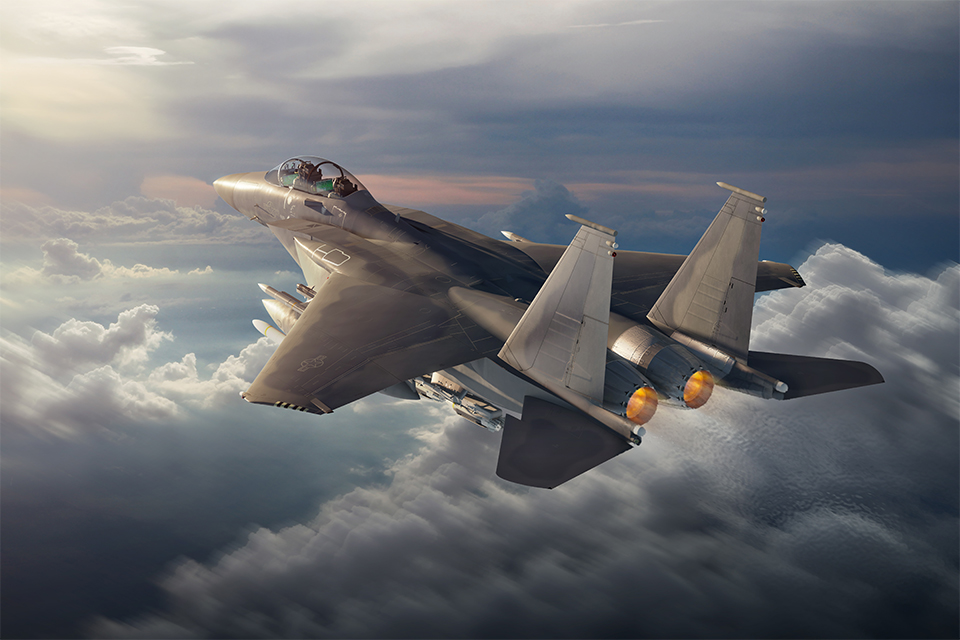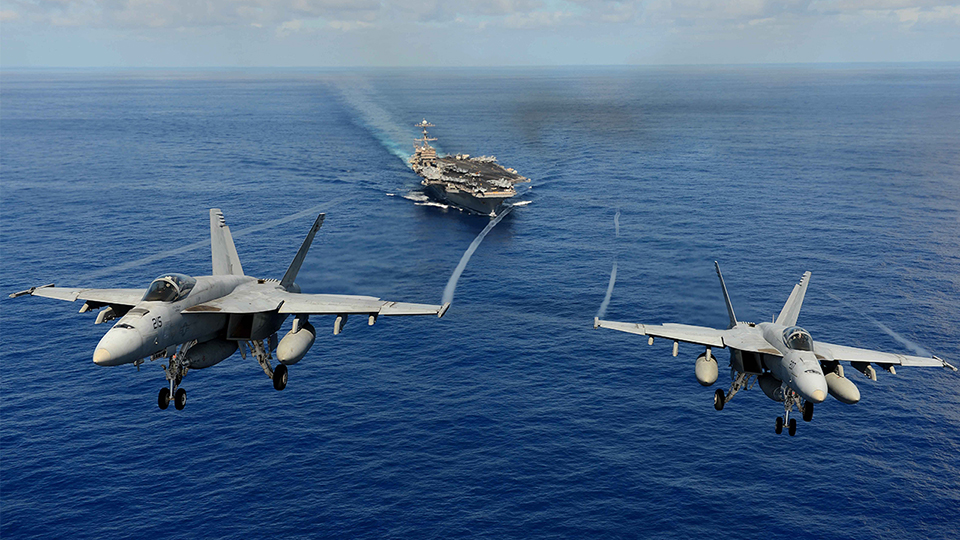
While India still hasn’t defined the kind of fighter it wants in an ongoing contest for 114 jets, Boeing’s plans appear to have become more well-defined than before. There are now multiple indicators to suggest that Boeing’s F/A-18 Super Hornet Block III jet is now primarily pointed at the Indian Navy, while the F-15EX is shaping up to be Boeing’s protagonist in the Indian Air Force requirement.
Livefist learns that Boeing will shortly receive a requested license to formally market the F-15EX to the Indian Air Force, with an announcement possibly imminent. It was in February that it was first revealed that Boeing planned to add the F-15EX to an Indian Air Force campaign that had thus far only involved the F/A-18 Super Hornet. While the F/A-18 will theoretically remain available to the Indian Air Force, it is becoming clear that Super Hornet energies are being pointed far more prominently at the Indian Navy, making what appears to be space for a more prominent positioning of the F-15EX for the IAF.
To be clear, the Indian Air Force hasn’t yet defined its requirements, and potentially has on its hands a contest where it must choose between jets as disparate as the F-15 and Su-35 at one end and the Gripen E and F-21 at the other. India’s decision last week to proceed with plans to acquire more of its existing jet types — 12 more Su-30 MKI and 21 MiG-29 UPG jets — has stirred a debate over whether priority urgency needs to be applied instead on the 114 Make in India jet program.
“I wouldn’t hypothesise about the requirements, but the reason we’ve applied for a license for the F-15EX is so that we can offer an entire spectrum of capabilities. And depending on how the requirements get panned out, we are comfortable and confident. But it’s still to early to say if it will be a single or twin engine,” said Ankur Kanaglekar, Head of India Fighter Sales at Boeing Defense in an interview to Livefist now up on our YouTube channel, linked here:
Asked specifically about the F-15’s expanding role in the campaign, Kanagalekar said, “A lot of years have passed, the technology has improved, the geopolitics has changed. I would rather wait to see the requirements before commenting on plans on the air force side.”

The invocation of geopolitics by Boeing’s India fighter campaigns head is significant, especially since it comes at a time when US-India relations have made major strides forward in an atmosphere of tensions with China. Two US Navy carrier battle groups have entered the western Pacific in recent days, with open saber rattling between both sides. But there’s plenty happening in India too, and not just on its border with China.
It is Livefist‘s assessment that the F-15EX will be much more prominently projected by Boeing as an IAF fighter going forward. The new strategy comes right ahead of the deliveries of India’s first Rafale jets this month. The Rafale had defeated Boeing’s F/A-18 in the erstwhile M-MRCA contest for 126 jets. That quest famously spiraled into the ground though, with the current Narendra Modi government then choosing to buy 36 Rafales, a fraction of the originally intended 126. Boeing brandishing of the F-15EX to the Indian Air Force may therefore be seen as a move to offset the clear advantages the Rafale now has by virtue of being in Indian inventory, and therefore making a default case for further orders.
“There will be more opportunities very soon to hear more about the F-15EX program, but won’t be able to share very much owing to the stage of the process. The US Air Force is interfacing with the Indian Air Force on that,” Kanaglekar said.

The emphasis of the F/A-18 Super Hornet for the Indian Navy’s 57 jet contest is visible too. Boeing art, including the image that headlines this piece, all specifically show the Super Hornet in Indian Navy colours. But the emphasis goes way beyond graphics. On the naval front too, the F/A-18 faces a fight against the Rafale, though Boeing believes the geopolitical/technological ecosystem and scale that comes with the Super Hornet make it a contender even if the Rafale has a ready ‘commonality’ case for the Indian Navy deal too.
“The Indian Air Force and Indian Navy have two very distinct requirements,” contends Kanagleka. “It’s a different world altogether when you’re talking about naval aviation. It is the other benefits that the Indian Navy will get from the collaboration, the growth potential, the fact that tremendous amount of scale exists out there will not be available anywhere else. Several dialogues are happening with the Indian Navy.“
In February 2019, Boeing entered into a three-way partnership with HAL and the Mahindra Group to support the F/A-18 pitch to India. Asked if that partnership would apply for the F-15EX too, Kanaglekar said, “It’s too early to say. Requirements will drive our business case and discussions. We are fully committed to Mahindra and HAL on the F/A-18 campaign. We will wait for requirements to see how things will pan out.”
Boeing’s partner HAL has made clear its sentiments on how difficult it will be for the IAF to draft requirements in the 114 jet program that covers disparate fighter types.
On the Super Hornet front, Boeing has had several levels of dialog with the Indian Navy over the last year. In February this year, Boeing revealed plans to test the F/A-18 on a ski-jump to prove compatibility on India’s current and upcoming aircraft carriers.
In the 114 fighter program, Boeing’s F-15EX (and F/A-18 Super Hornet) potentially go up against a raft of fighters that include the Rafale, Su-35, MiG-35, Gripen E, Lockheed Martin F-21 and Eurfighter Typhoon. It remains to be seen how evaluations will play out, considering the huge energies spent on the M-MRCA field trials and tests, a contest described by a former Boeing India head as ‘a beauty contest on specs’.

India should be looking to buy similar aircrafts for both the services, as that’ll reduce the logistical costs greatly in the future. 2 different aircrafts are a recipe of complications and logistical and maintenance nightmare. F-15, as proven and capable it is, should be the first aircraft alongside Su-35 marked for rejection as they are heavy weight fighter-bombers, and not mid-weight which India is looking for.
Oh My God! We have been evaluating, pricing, re-pricing and contract negotiating for fighter program(s) for 40 years, but can’t come to terms with which way we want to go. A dart throwing money would have given you a better answer.
Lets just get a few of all fighter jets on offer and turn servicing and maintenance into a clusterduck, If the prospect of a two front isn’t daunting enough lets just make our lives harder some more.
What nonsense is this ? The F-15 E is in the weight category of Su-30 MKI. Wasn’t the MMRCA contest for a so-called MEDIUM weight fighter ?
And when the Twin-engine Tejas is under development for the Navy, do we need F-18s ? That besides, an altogether new fighter type, which is quite unnecessary.
It seems that the fascination for shiny western toys hasn’t really gone off from the armed forces.
It’s just proves that tejas is just a gimick, to fool the nation fighters that started same time as tejas are retiring in other air forces. The establishment can’t even decide what kind of fighter its looking for mid or heavyweight
The advantage of the F15E is that it is a dedicated attack aircraft and so can supplement the Jaguar.
The IAF, as the MiG27 is no longer operational, needs a heavy attack aircraft which is also an exceptional fighter and the F15EX more than fits the bill. The Su30 while an exceptional fighter comes nowhere close in the attack ability.
The ideal scenario for the IAF, budget permitting is 114 Rafale, and 60 F15EX. In the meantime continue with the modernisation of the Mirage 2000. By the time all these are inducted the Jaguars and Mig29 will have come to the end of their useful lives, with the experience of producing Tejas2 will mean that Indian industries should be able to maintain the Su30 and so increase their readiness levels from the current mid 50%.
India got to move eventually from Russian fighters to western/indigenous to improve overall qualitative edge over her neighbors.
This will provide better support for sensors and armament from west for our upcoming tejas as well , along with high availability of aircraft(75% ).
If we compare F-15 EX with our SU30 MKI , upgradation is not seemless in SU30 and will be retired in next decade .
I feel combination of F-15EX for airforce and F-18 for Navy is good step toward replacing russian jets.
Next decade IAF will retire all MIGs, MIRAGES and JAGUAR.
And logistic wise IAF needs to maintain Boeing(F15/F18), Tejas(Mk1,Mk1a,Mk2,ORCA,AMCA) , SU30 and Rafaels, so things seems streamlined isnt it?
F15EX would be deterrent for the chinese and pakisthan as its capability is not aware. F15EX would not be sold to both of them in this century. On the other hands sukhois, the chinese are already making duplicates. Fear of the unknown is more important !!!!
problem with US jets is its political ecosystem they come with………..